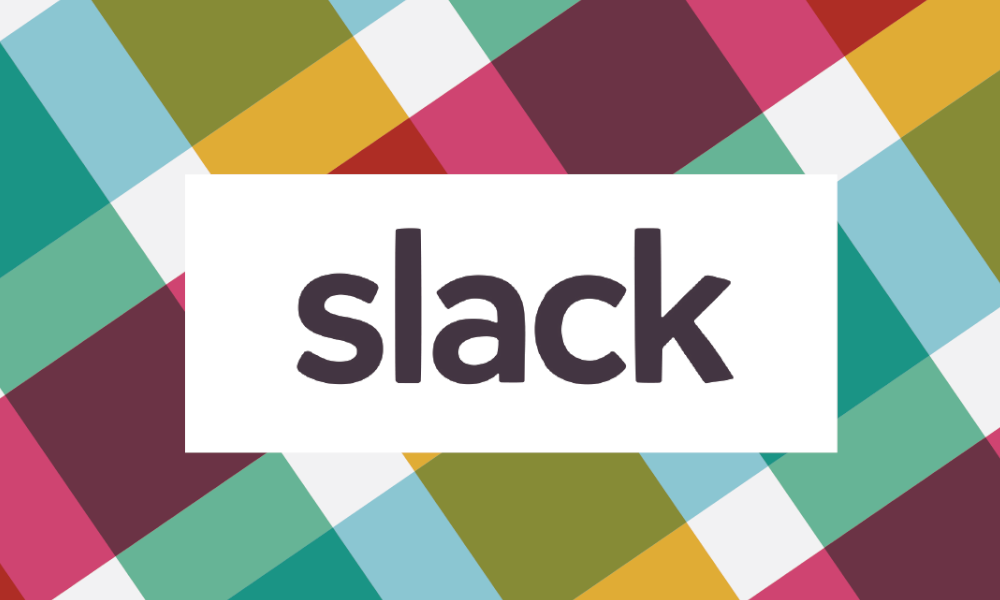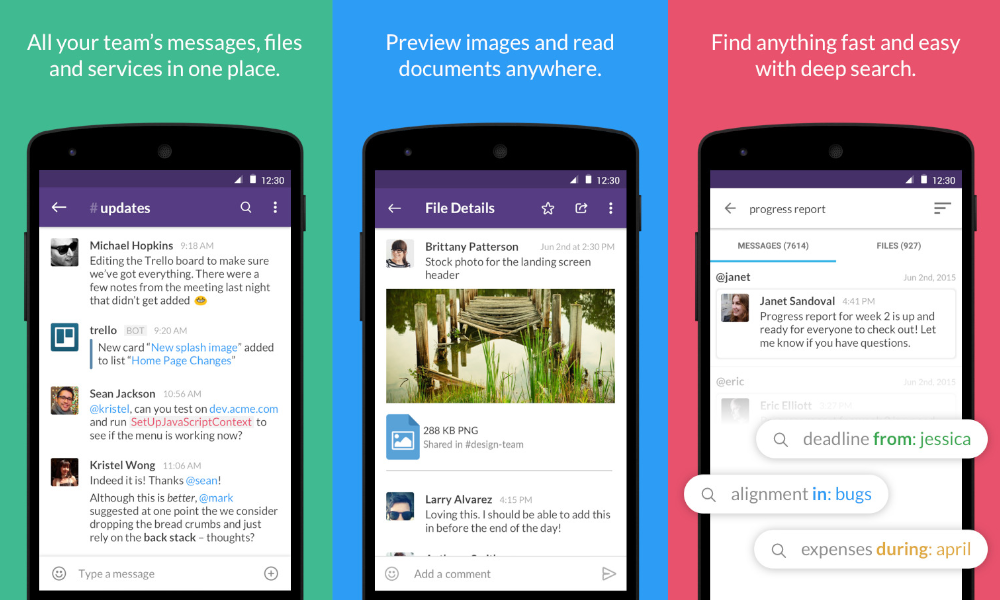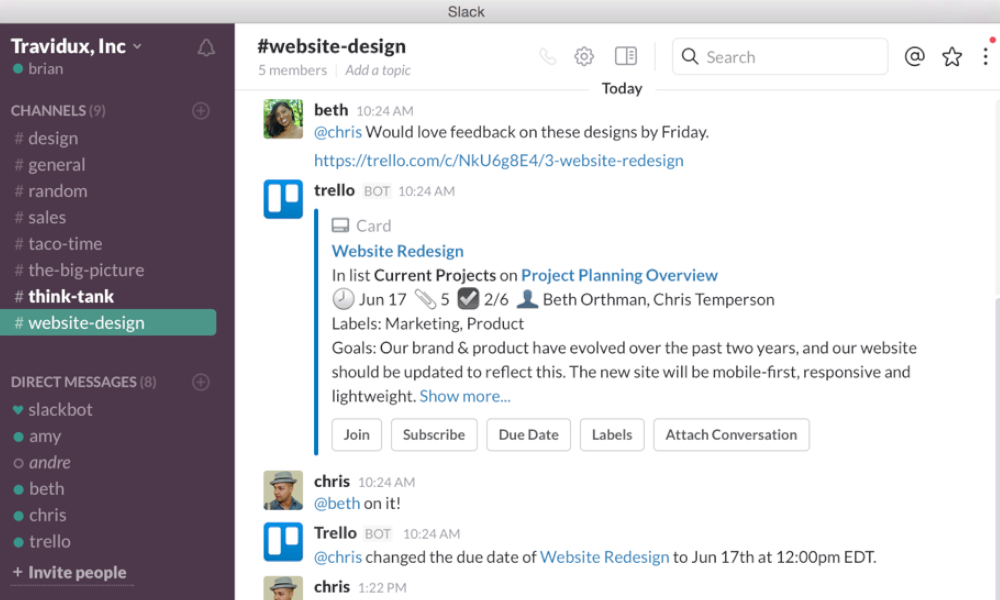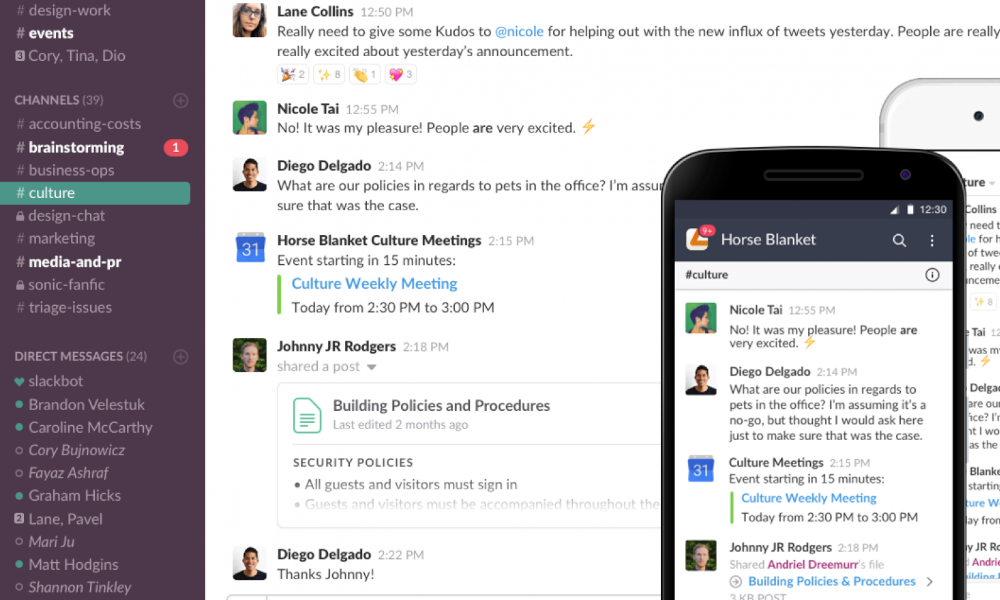In 2017, at the ripe old age of 4, Slack had grown to 1.5m paid subscribers, 60,000 active teams, and 5.8m active weekly users. And all that happened without so much as a marketing campaign, popup ad or bulk email solicitation. So how did founder Stewart Butterfield create such a behemoth success? By focusing on what matters most: customer feedback.
Slack’s Beginnings
A co-founder of Flickr, Butterfield’s next project was a now defunct web game that went nowhere fast. Butterfield retained a skeleton crew and began researching what direction to go next; but not before helping each of his terminated employees find a new job first.
And it’s this core ideal of humanity and putting people first that became Slack’s most valuable asset. Butterfield realized there was a void in the field of team communication and collaboration. So, he turned his focus toward bringing people together from all corners of the globe and help teams collaborate more efficiently.
Slack first launched in spring of 2013 as a prototype. Within a few months, they refined the app further and began soliciting companies directly to give it a try so they could gain some feedback. It was just word of mouth, but they managed to get almost 10 companies onboard. What they discovered, was Slack didn’t work so well with large teams of collaborators. So, they continued to refine the app, and slowly asked larger and larger companies so they could keep tweaking and refining incrementally.
Slack Gets Slick 
By the summer of 2013, Slack was ready for a beta launch. However, Butterfield decided that he didn’t want his new baby stigmatized as a beta, so instead, he took a page from Apple’s book and created a false sense of supply and demand by baiting users to sign up for an exclusive invitation to test drive the app. The tactic worked, and 15,000 eager suitors submitted invitation requests within the first two weeks. But the PR campaign didn’t stop with a well-crafted press release.
Butterfield followed that up with a strong social media push, getting people to spread the word about this hot new app and sign up for the exclusive invitation. Perception is everything, and the growing list gave Butterfield a roster of eager wannabe users to draw from. Slack remained an invitation only beta for six months while Butterfield and his team honed feedback and integrated changes into their product.
Winning People Over 
Unlike standalone apps, where you only need to win over each individual user, Slack required consensus from an entire group, which isn’t always an easy thing. To counteract the risk of rejection, Butterfield created resources that explained how Slack worked, how to implement it, and how it could best serve each team’s unique needs.
Butterfield spent a lot of time talking to his users, trying to figure out what they were currently using and how it was being implemented. What he discovered, was his users were migrating to Slack from a mish-mash of communication tools, like email, private Facebook groups, and text messaging. The lack of a universal collaboration tool helped develop Slack into a product that could fill that void.
For smaller companies, a team of collaborators might include everyone, while larger companies often had project leaders with the authority to pay for a service like Slack. This tact helped Slack secure more subscribers, since larger companies might obtain multiple licenses for each respective team, and internal word of mouth encouraged coworkers to adopt this cool new collaboration tool.
A Cornerstone of Customer Service & Cool 
Customer service was key. Early on, he fielded about 50% of the help tickets himself, and looked upon each one as an opportunity to win over a new loyal customer. Slack prioritized fixing bugs quickly and implementing new tweaks as soon as issues came up. Slack’s philosophy was to put the customer first, listen, and take action, so their customers would be more inclined to stay loyal and refer the app.
Slack’s success can also be quantified by its hipsterish approach. The name alone suggests workers are just kicking back and slacking off, and the look is very inviting and appealing. Some might hazard to say Slack makes work seem more like play. Compared to other collaboration tools on the market, Slack comes off like a fun chatroom among friends, rather than the powerhouse productivity tool that it is. Whatever the secret ingredients are, rest assured they are carefully crafted design choices.
Slack’s Continued Success 
But customer loyalty and branding alone can’t build companies. Almost a year after its launch, Slack raised 43 million dollars in April 2014, with another 120 million that following October on a 1.2 billion dollar valuation.
By March of 2015, Slack gained an additional 160 million dollars on a 2.76 billion dollar valuation. By any measure, it’s been a skyrocket to success for the app.
Slack continues to grow, adding more subscribers and daily users all the time and is always looking for new ways to innovate. In January of 2015, slack acquired Screenhero, a voice, video and screen sharing tool that will further expand Slack’s functionality and reach. In just 4 years, Slack has gone from an internally hacked IRC client to a leader in its field, and Butterfield attributes their success to his grassroots marketing approach, and keeping their customer’s needs in the forefront.
Resources:
firstround.com/review/From-0-to-1B-Slacks-Founder-Shares-Their-Epic-Launch-Strategy/
fastcolabs.com/3026418/open-company/this-story-about-slacks-founder-says-everything-you-need-to-know-about-him
medium.com/@awilkinson/slack-s-2-8-billion-dollar-secret-sauce-5c5ec7117908




